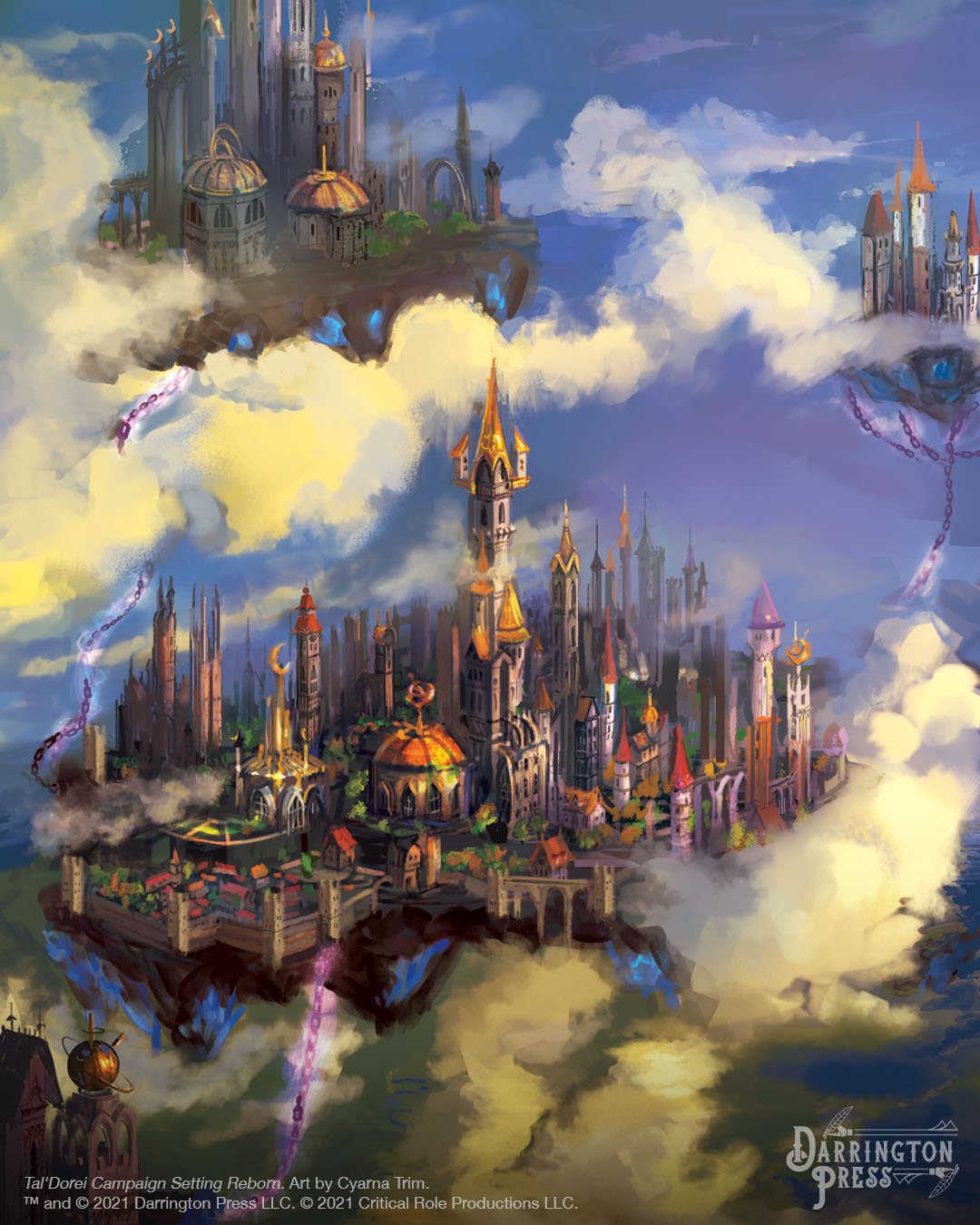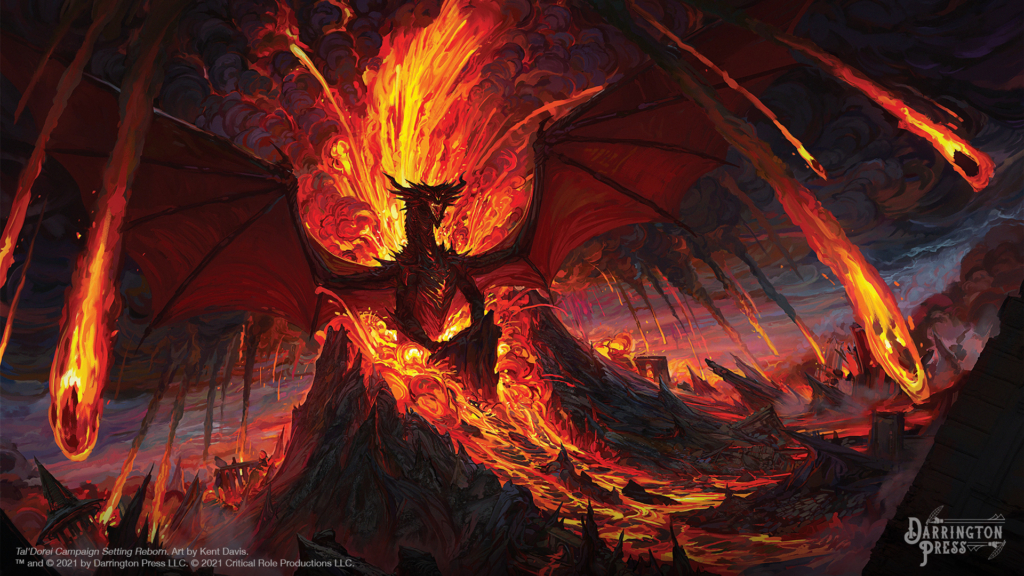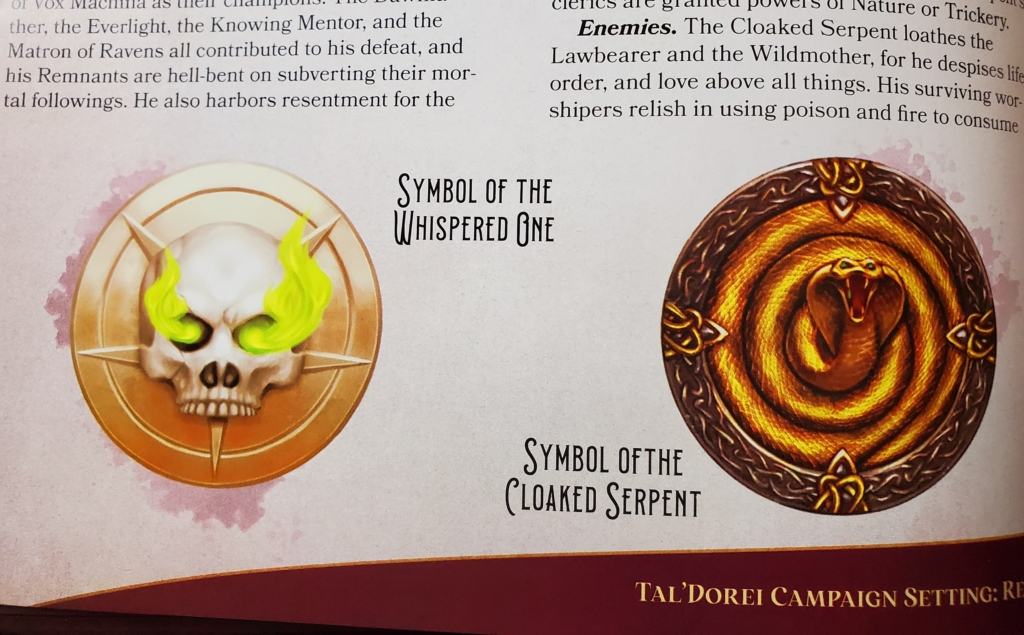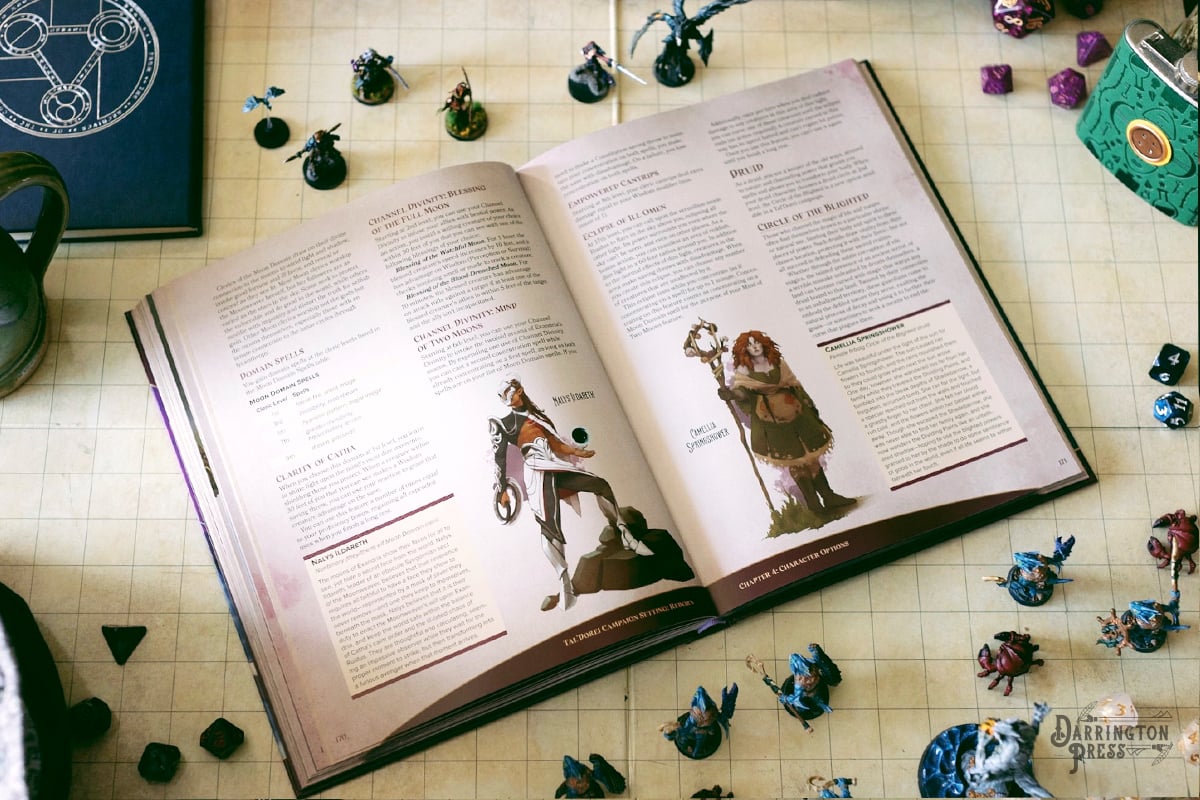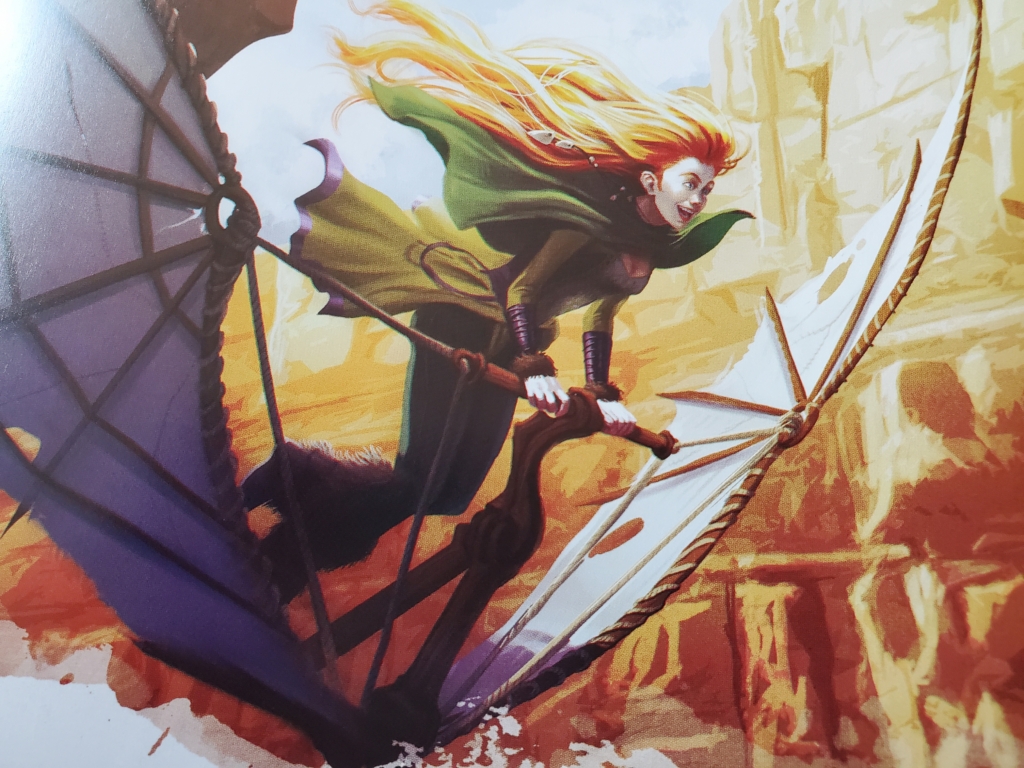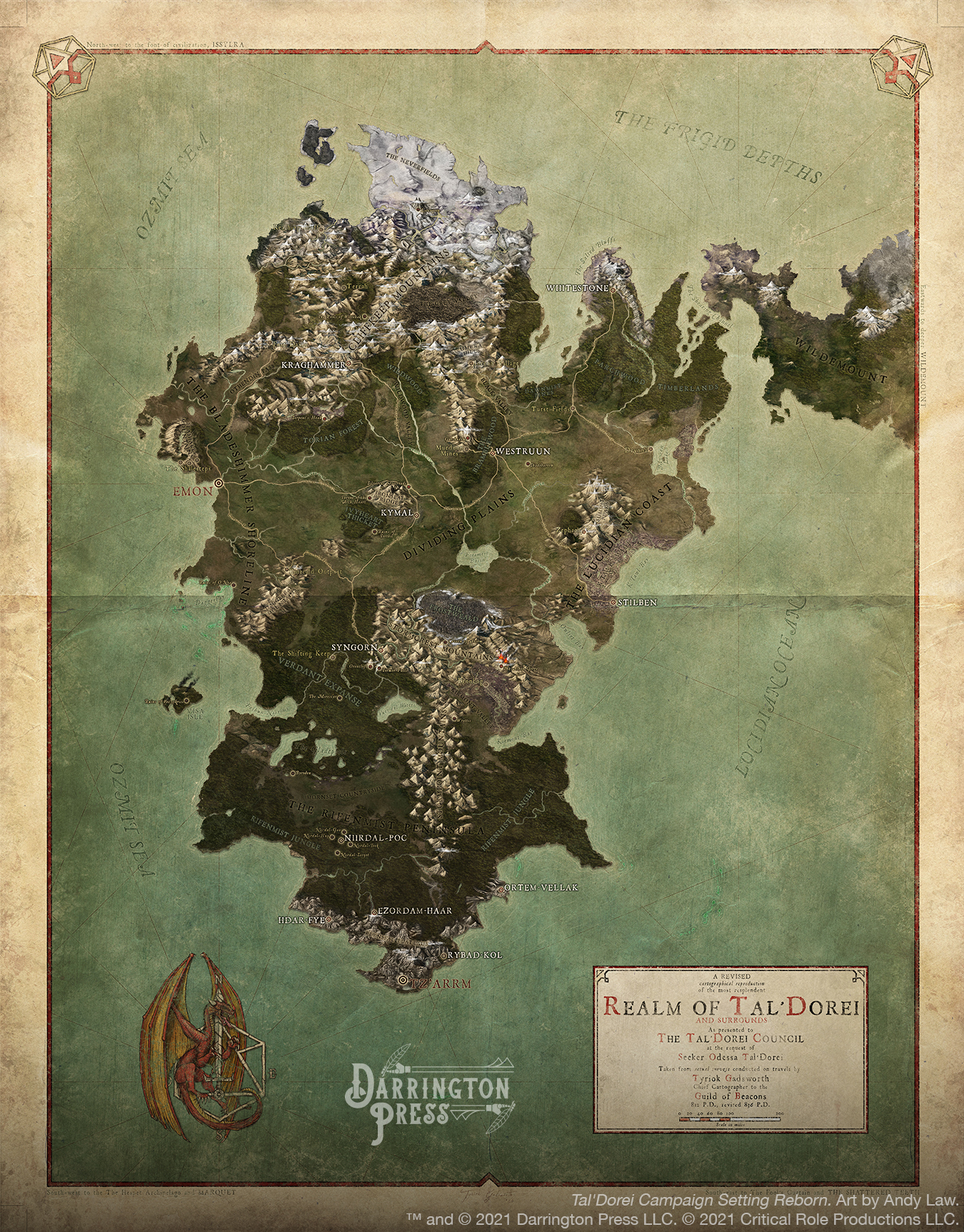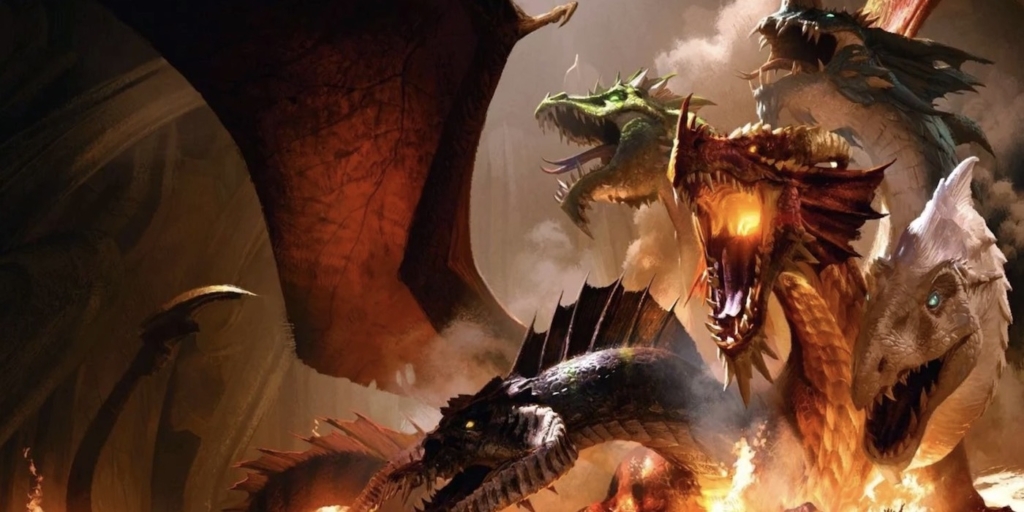D&D: Tal’dorei Campaign Setting Reborn – First Impressions – UPDATE
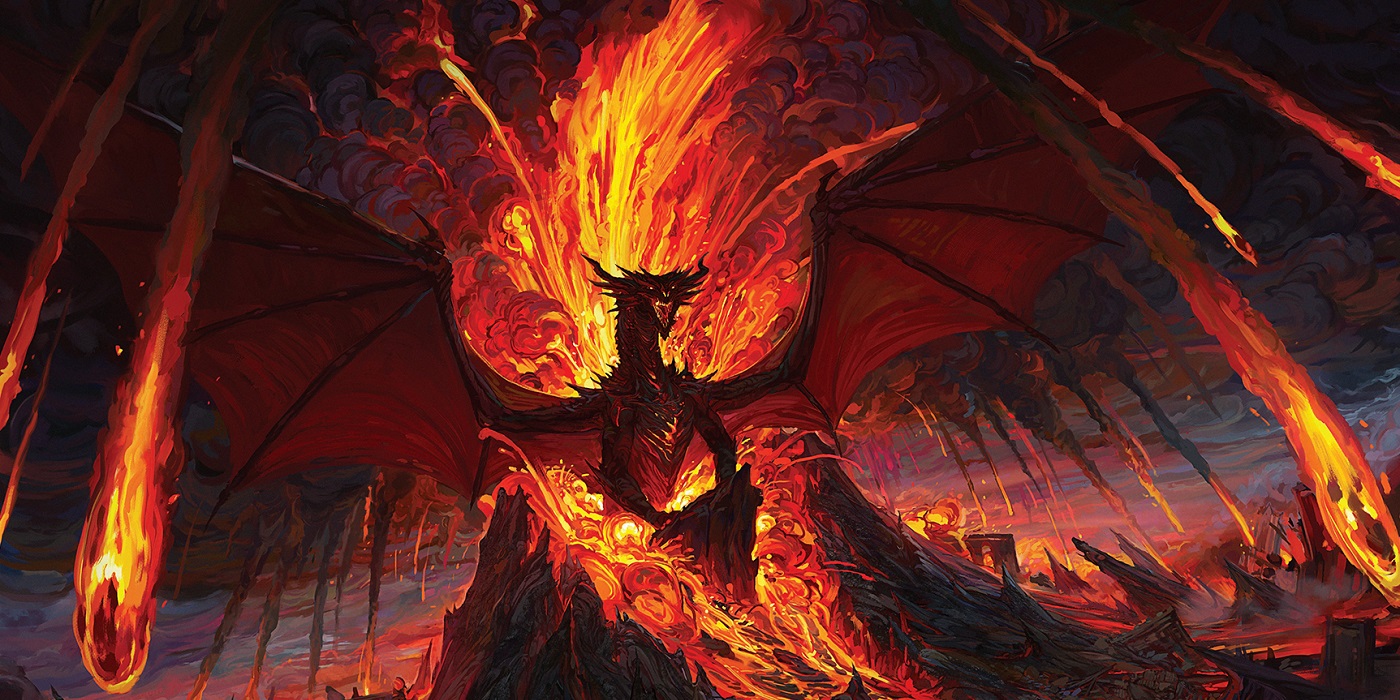
Tal’dorei Campaign Setting Reborn reimagines and updates the world of Exandria with new subclasses and more. Here’s our first impressions.
It’s been a while since I’ve held a tome this beefy. Tal’dorei Campaign Setting Reborn leaves a weighty first impression in every sense of the word. TDR is an update to and expansion of the previous Tal’dorei book, and it’s like something out of another era of gaming.
It comes with a big fantasy map. The book has loads of adventure hooks and hundreds of pages full of points of interest, towns, monsters, and more. TDR explores the rough edges and nooks and shadows of Matt Mercer’s vividly detailed world of Exandria.
It calls to mind the latter days of 3.5 edition, when a new campaign setting book unlocked wonders. And while this world is familiar to many, it still seems to hold secrets. The writing gives you a sense of the mythic feel and tone of Exandria.
It doesn’t reinvent the fantasy genre–but it’s not trying to. The setting was Mercer’s love letter to the fantasy novels and games that inspired him. And the book is Mercer and co-authors James Haeck and Hannah Rose’s expansion on that.
Sure, the world is filled with many expected things: a once-powerful empire that grew too far too fast and fell. A calamitous war of the gods that resulted in a time during which there were many troubles. The gods warred and that was the Calamity. Only it wasn’t as long ago as you think. And the aftereffects are still being felt through the world.
The Identity of Tal’dorei Campaign Setting Reborn
That’s where the book begins. Tal’dorei Campaign Setting Reborn does so much more than just retread old ground though. It’s an expansion to the world critters know and love. In the first section of the book you’ll find a guide to the history of Exandria, and then a drilling down into the details of the world. But what really stood out to me is how much work Mercer, Haeck, and Rose have put into carving out a distinct identity for Exandria.
This book isn’t published by Wizards of the Coast. It’s published under the 5E OGL–printed right there as the last page in the book. Which means that it has to carve out its own identity. For instance, instead of Genasi and Golaiths we get Ashari and Stoneborn or Half-Giants. Here’s where we see Critical Role establishing its own identity. Which, with an animated series in the works, it needs to.
Gone are the names of the Pantheon. You won’t find reference to Asmodeus or Bane or Lolth. Instead you’ll find the Lord of Hells, the Strife Emperor, and the Spider Queen. Even Vecna, whom Vox Machina defeated at the end of Campaign 1 isn’t mentioned by name. Here he’s The Whispered One.
But these changes, this distinction, is a huge boon for Exandria’s identity. Everything becomes so much more distinct when you have to make it your own. D&D’s Genasi are very specific, and they have kind of been left to languish.
But Exandria’s Ashari have their own distinct identity. They’re not just people tied to the elemental planes. They have their own cultures, their own abilities, and their own culture. Which is represented by a host of new things from backgrounds to magic items and more.
It’s where some of the best stuff in Tal’dorei can be found. This book is at its best when it’s playing in the massive sandbox Mercer and co. built.
Subclasses In Tal’dorei Campaign Setting Reborn
Okay, enough about what the book does. Let’s get to the good stuff. Fans and players have been hungry for the new subclasses so let’s get right to those first. We’ll go in depth with each of these in another article, but here’s an overview of every new subclass in the book:
- Barbarian Path of the Juggernaut – Push enemies around and smash objects with unstoppable force
- Bard College of Tragedy – Emo bards that support the party in surprisingly strong ways, including expanded threat ranges and changes to enemy saves
- Blood Domain Cleric – Use the power of blood to creepily bond with or control your friends and enemies
- Moon Domain Cleric – Use the power of the moons to do magic better
- Druid Circle of the Blighted – Use the power of pollution and toxic magic to be a better bear
- Monk Way of the Cobalt Soul – As seen in Campaign 2, this subclass embodies the idea of knowing thy enemies and thyself
- Paladin Oath of the Open Sea – As seen in Campaign 2, this subclass is for Paladins who decide a pirate’s life is for them
- Runechild – Use your magic to charge up runes and store spell energy for later
- Wizard School of Blood Magic – Use Blood Magic to do creepy blood things and more damage
There’s a lot here. In fact there’s a lot for players to love about the book.
Player Options in Tal’dorei Campaign Setting Reborn
There are new magic items, new feats, new backgrounds. There’s a lot for players to dig into here. Even if you’re not interested in playing one of the new subclasses, there’s still a lot to enjoy.
And, flipping through the book, it’s hard not to find something to be excited about. Whether it’s a powerful Vestige of Divergence–weapons that level up with you–or a common item like a skyboard, there’s just a lot that looks interesting to play with here.
Final Thoughts
Mercer, Haeck, and Rose put their love of the game into this work, and it shows. Mercer’s “homebrew” classes have been criticized before for balance. And while that may be an issue here, everything feels like something a player would want to try, or that a GM would want to run.
There’s a feat called Vital Sacrifice that lets you store up damage that you can do later to an enemy (and yourself). Or how about a mechanic for creating magical runes that you can use later? Or empowering your magic sword?
There are exciting new monsters to play with. You can find Mercer’s house rules aggregated here. It all feels like what Mercer and co. want D&D to be. This is a glimpse at how they play and what they love. TDR feels like it was written by people who play D&D for people who play D&D. Definitely worth checking out.
Update: We have a video overview of the book available right here:
Happy Adventuring

